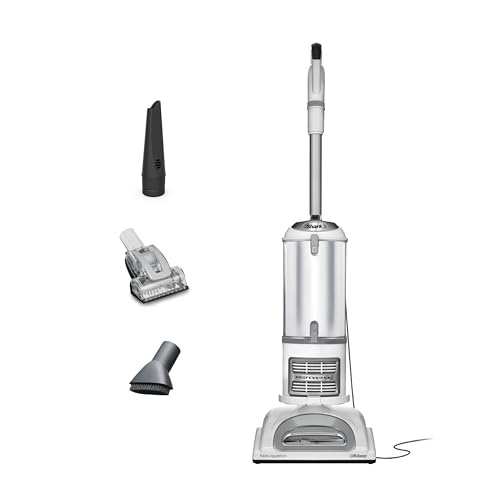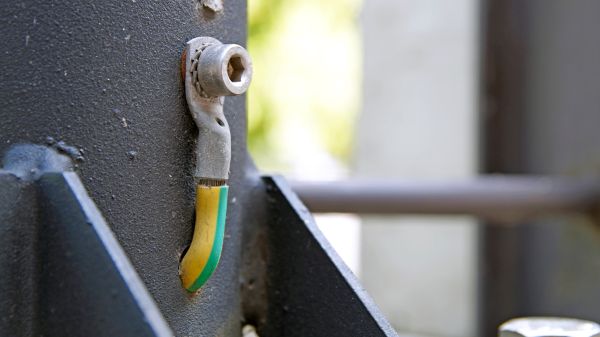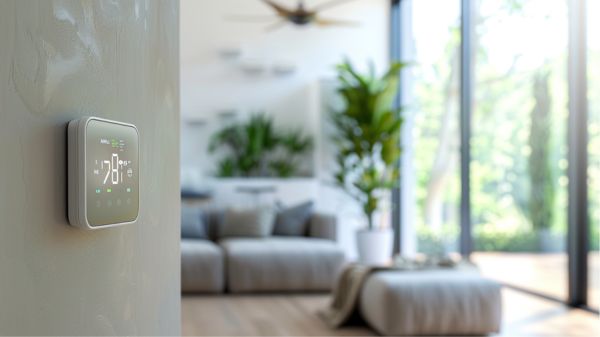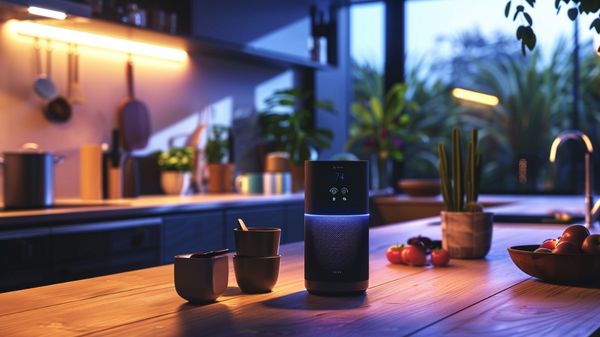As the colder months approach, managing effort to reduce static electricity within our homes becomes an increasingly nagging concern. This phenomenon, not only a minor annoyance with its unexpected shocks, can potentially harm sensitive electronic devices.
Addressing this issue effectively involves a series of strategic steps, beginning with the optimization of indoor humidity levels. While maintaining humidity might seem straightforward, the interplay between different fabrics, cleaning practices, and grounding techniques introduces a complexity that requires a nuanced understanding.
Exploring these methods further could reveal some surprising and innovative ways to mitigate static electricity, ensuring both comfort and the longevity of our electronic devices.
Key Takeaways
- Maintain indoor humidity levels between 40% and 60% using humidifiers or houseplants to reduce static buildup.
- Opt for natural fiber clothing and leather-soled shoes to minimize static charges.
- Use anti-static products like dryer sheets, sprays, and mats to neutralize charges on surfaces and in laundry.
- Implement regular cleaning routines, including vacuuming with HEPA filters and mopping with damp mops, to remove dust that contributes to static.
Understand Static Electricity
Static electricity arises from an imbalance of electric charges on material surfaces, primarily due to friction between objects. This phenomenon occurs when certain materials gain or lose electrons through contact and separation with other surfaces, leading to a net electrical charge. The nature of this charge is such that it seeks equilibrium, and when it finds a path to discharge—often through conductive materials like metal—it results in a spark or shock.
The propensity for static charge accumulation is significantly higher in environments with low humidity. Dry air lacks the moisture needed to conduct electrical charges away from charged surfaces, thereby increasing the likelihood of static buildup.
Everyday activities, particularly those involving synthetic fabrics or movements across carpeted floors, can exacerbate this accumulation. The static charge may then manifest as a sudden shock when touching a conductive object, or even just another person.
Understanding the dynamics of static electricity is essential in strategizing how to reduce its occurrence. By recognizing the conditions under which static buildup is most prevalent, one can implement effective measures to mitigate its effects. This foundational knowledge serves as a stepping stone towards creating a safer and more comfortable living environment, free from the nuisances and potential hazards of unchecked static electricity.
Maintain Ideal Humidity
Maintaining indoor humidity levels between 40% and 60% is essential for reducing static electricity buildup, as this range of moisture helps dissipate electrical charges more effectively. The presence of moisture in the air serves as a natural conductor, facilitating the neutralization of charges that typically accumulate and lead to static shocks.
Implementing a humidifier is a strategic approach to achieving and maintaining the desired humidity level, particularly during the winter months. Heating systems can greatly dry out the indoor air, thereby increasing the likelihood of static electricity. A humidifier reintroduces necessary moisture into the environment, stabilizing the indoor humidity and reducing static occurrences.
For precise management of indoor humidity, utilizing a hygrometer is advisable. This tool allows for regular monitoring, enabling timely adjustments to maintain the ideal humidity range.
In addition, incorporating houseplants into your living spaces can enhance the moisture content of the air naturally. Plants release water vapor during transpiration, which adds to the indoor humidity and aids in reducing static electricity.
Additionally, for immediate effects, placing bowls of water near heating sources or boiling water can temporarily increase air moisture. These methods are practical solutions to quickly augment the humidity and mitigate static buildup in your home.
Choose Appropriate Fabrics
How can the choice of fabrics influence the level of static electricity in your home?
Selecting the right materials for clothing and home textiles is essential in mitigating static buildup. Natural fibers like cotton and wool inherently resist the development of static charges, unlike synthetic fibers such as polyester and nylon, which can exacerbate static accumulation due to their low conductivity.
To effectively reduce static electricity, consider the following practical strategies:
- Opt for clothes made from natural fibers to minimize the generation of static charges.
- Wear leather-soled shoes when walking on carpeted areas; leather’s conductive properties help dissipate static buildup.
- Avoid rubber-soled footwear, which contributes to static accumulation by insulating your feet from the ground.
Use Anti-Static Products
Incorporating anti-static products into your home can effectively mitigate issues related to static electricity. Among these, fabric softeners play an important role. When used in laundry, liquid fabric softeners coat fibers, neutralizing charges and greatly reducing static cling.
Similarly, dryer sheets, which may be rubbed directly onto clothing and upholstery, provide a portable solution to combat static on-the-go.
Anti-static sprays are another essential tool. These sprays can be applied to carpets, upholstery, and garments to neutralize static charges. Their formulations are often designed for long-lasting effects, ensuring continuous protection against static buildup.
Anti-static mats, strategically placed in high-traffic areas such as entryways and near electronic workstations, help dissipate electric charges, effectively preventing the unpleasant shocks typically associated with static electricity.
Additionally, the market offers specialized laundry products, including additives like baking soda, which are particularly effective in neutralizing static charges during the wash cycle. This is especially beneficial for synthetic fabrics, which are inherently prone to static accumulation.
For an enhanced level of protection, moisture-enhancing products such as moisturizing sprays or mists can be used. These products increase the humidity on surface areas, thereby aiding in the further reduction of static buildup without directly increasing air moisture levels, which will be discussed in subsequent sections.
| # | Preview | Product | Rating | Price | |
|---|---|---|---|---|---|
| 1 |

|
Bounce Anti Static Spray, 3 in 1 Instant Anti Static Spray & Instant Wrinkle Release, Odor... |
$6.69
$5.68 |
Buy on Amazon | |
| 2 |

|
SWEETHOMEDECO 4 Packs Car Static Human Body Static Eliminator Discharger, Silver Tone High... |
$8.99 |
Buy on Amazon |
Implement Humidification Methods
After addressing the role of anti-static products, another effective strategy to mitigate static electricity involves implementing various humidification methods.
Maintaining a balanced indoor humidity level is vital in reducing static electricity, and using a humidifier can be particularly effective. By setting indoor humidity between 30% and 50%, a humidifier guarantees the air is sufficiently moist to prevent the buildup of static charges.
Additionally, integrating a whole-home humidification system into your heating system facilitates consistent humidity control throughout your living space, which is essential for preventing the discomfort associated with static shocks.
Here are some detailed, emotion-evoking strategies to implement humidification methods:
- Feel the Serenity: Experience the tranquility that comes with a well-balanced humid environment, reducing the annoyance of static shocks.
- Embrace Consistency: Enjoy the constant comfort provided by a whole-home humidification system, eliminating the erratic nature of static electricity.
- Cherish the Natural: Incorporate houseplants to not only beautify your space but also to naturally enhance indoor humidity, fostering a healthier, more inviting home atmosphere.
Regularly monitoring humidity with a hygrometer guarantees you are maintaining the ideal range to effectively reduce static electricity.
Regular Cleaning Practices
To mitigate static electricity at home, adopting regular cleaning practices is essential. Effective vacuuming techniques remove dust and small particles from floors, which are primary contributors to static buildup.
Additionally, mopping floors enhances this effect by capturing residual particulates, while regular dusting with microfiber cloths efficiently traps dust, further preventing the accumulation of static charges.
Effective Vacuuming Techniques
Effective vacuuming techniques, particularly in high-traffic areas and on carpets, play an essential role in minimizing the buildup of static electricity in your home.
Regular vacuuming not only helps reduce dust and debris, which are primary contributors to static, but it also maintains the cleanliness and humidity balance necessary to keep static electricity at bay.
Using a vacuum equipped with a HEPA filter is vital as it traps fine particles without causing additional static discharge that can exacerbate the situation. Here are detailed and effective vacuuming strategies to take into account:
- Select a Vacuum with a HEPA Filter: Verify your vacuum is fitted with a HEPA filter to effectively capture fine dust particles while minimizing airborne dust and allergens.
- Use Antistatic Attachments: Equip your vacuum with antistatic brush attachments to neutralize static charges directly on surfaces, enhancing the effectiveness of dust removal.
- Vacuum on Humid Days: Perform vacuuming tasks when humidity levels are higher, as moisture in the air naturally reduces static buildup.
| # | Preview | Product | Rating | Price | |
|---|---|---|---|---|---|
| 1 |

|
Shark | Upright Vacuum Cleaner | Navigator Lift-Away | Swivel Steering | HEPA Filter | Vacuum for... |
$199.99
$129.98 |
Buy on Amazon | |
| 2 |

|
LEVOIT Cordless Vacuum Cleaner, Stick Vac with Tangle-Resistant Design, Up to 50 Minutes,... |
$199.99
$149.99 |
Buy on Amazon |
Benefits of Mopping Floors
Regular mopping of floors is essential for removing dust and debris, thereby reducing the buildup of static electricity and enhancing indoor cleanliness. This cleaning practice, when conducted systematically, can greatly mitigate the frictional charging that occurs due to foot traffic across different types of flooring such as hardwood and tile.
By incorporating a damp mop in your cleaning regimen, you not only pick up the fine particles but also introduce a slight increase in the humidity in your home. This added moisture is vital in curbing the dry conditions that favor static electricity accumulation.
Furthermore, the use of an anti-static floor cleaner during the mopping process can considerably amplify this effect. These specialized cleaners contain compounds that neutralize the charge on surfaces, thereby preventing the static from gathering. Regular mopping, especially with the right products, forms an effective barrier against the static charges that typically accumulate on floor surfaces.
Maintaining a regular mopping schedule—optimally at least once a week—ensures that your floors remain not just visibly clean but also functionally conducive to a lower-static environment. This practice not only enhances the aesthetic appeal of your home but also supports a healthier indoor air quality by lessening the presence of allergens and airborne particles.
Importance of Dusting Regularly
Dusting regularly is vital for mitigating static electricity buildup by removing dust particles that attract and retain electrical charges. This regular cleaning practice effectively reduces the likelihood of encountering unpleasant static shocks, particularly in environments filled with electronic devices or synthetic materials.
Utilizing tools like microfiber cloths can enhance the dusting process, as these cloths are specifically designed to trap dust and minimize its redistribution into the air, further decreasing static issues.
- Healthier Living Space: Regular dusting maintains a clean environment, important for respiratory health and minimizing allergens.
- Enhanced Comfort: A dust-free home prevents the discomfort of frequent static shocks, creating a more comfortable living environment.
- Protection of Electronics: By reducing static electricity, dusting helps safeguard sensitive electronic equipment from static discharges that can cause damage.
Employing a consistent dusting routine not only maintains the aesthetic appeal of your home but also plays a significant role in managing static electricity. This emphasizes the importance of incorporating dusting into regular household maintenance tasks to guarantee a safer and more pleasant home environment.
Grounding Techniques
Grounding techniques are essential for mitigating static electricity in residential settings, focusing on Metal Object Uses, Effective Grounding Practices, and Static Discharge Prevention.
Strategically placing metal objects for accessible grounding and employing antistatic devices like wrist straps or mats guarantees a thorough approach to safely discharge static accumulations.
This segment will explore the implementation of these practices to enhance household safety and protect sensitive electronic devices from potential damage.
Metal Object Uses
Utilizing a metal object as a grounding tool allows for the safe discharge of excess static electricity, greatly reducing the risk of shocks when touching static-prone materials. When static electricity builds up in the body, it seeks a path to the ground to balance the electrical charge.
By holding or touching a metal object, such as a key or a safety pin, you provide a conductive path that facilitates this balance, effectively grounding the static charge. This simple action can markedly decrease the likelihood of experiencing a static shock.
This grounding technique is particularly useful in environments with low humidity, where static electricity tends to accumulate more readily. Regularly employing metal objects for grounding in areas like entryways or laundry rooms can enhance overall comfort and prevent the unpleasant surprise of static shocks.
The routine of touching a grounded metal object, like a doorknob or light switch, before handling other materials or moving through static-prone zones can be a practical approach to manage and reduce static electricity buildup.
- Peace of Mind: No more unexpected zaps when reaching for a doorknob.
- Simplicity: Just a touch dispels the charge, integrating easily into daily routines.
- Safety: Reduces the risk of damage to sensitive electronics from static discharge.
Effective Grounding Practices
Building on the concept of using metal objects for grounding, further techniques can enhance the effectiveness of static electricity management in the home.
Grounding techniques are essential for creating a conductive pathway that facilitates the safe discharge of static electricity into the earth, thereby minimizing the risk of shocks and reducing static buildup in sensitive environments.
One effective method is the use of antistatic wrist straps, especially when handling or repairing electrical devices. These straps maintain a constant, safe connection between the person’s body and the ground, guaranteeing any accumulated static charge is dissipated effectively.
Similarly, grounding mats can be employed in areas prone to static discharge, such as electronics workstations. These mats provide a direct, reliable grounding surface, greatly aiding in the reduction of static electricity.
Moreover, the practice of touching a grounded metal object, such as a water pipe or any metal fixture securely connected to ground, before engaging with static-sensitive materials offers a quick and easy way to neutralize static charge on your body.
Additionally, regular maintenance and inspection of the grounding status of electrical services and outlets is vital. This not only guarantees the integrity of grounding systems but also bolsters the overall measures taken to reduce static electricity in the home.
Static Discharge Prevention
To mitigate the risk of static discharge in sensitive electronic environments, employing grounding techniques such as wrist straps and grounding mats is crucial. These measures guarantee that electrical charges are safely dissipated, thereby protecting delicate electronic components from the potentially devastating effects of static electricity.
Utilizing these grounding techniques effectively reduces static electricity accumulation that can lead to sudden and harmful static discharge. Here is why grounding techniques are indispensable:
- Safety Assurance: By grounding yourself before interacting with electronic devices, you greatly reduce the risk of delivering a damaging electrical shock that could impair the functionality of these devices.
- Equipment Protection: Grounding mats and wrist straps provide a controlled pathway for static electricity to flow to the ground, thereby safeguarding sensitive electronics from the abrupt discharges that can cause permanent damage.
- Enhanced Reliability: Regular maintenance and use of grounding systems guarantee that electronic workspaces are free from disruptions caused by uncontrolled static discharges, leading to more reliable and efficient operations.
Frequently Asked Questions
How to Lower Static Electricity in a House?
To lower static electricity in a house, implement humidity control through humidifiers, choose anti-static fabric options, utilize grounding techniques, enhance air circulation with fans, and maintain regular cleaning routines to reduce dust accumulation.
What Neutralizes Static Electricity?
To neutralize static electricity, consider using anti-static products, maintaining ideal humidity levels, employing grounding techniques, selecting natural fabric choices, and managing electronic devices to prevent excessive charge accumulation and discharge.
What Causes so Much Static Electricity in My House?
Factors causing excessive static electricity in your home include low humidity levels, carpet materials, the use of electronic devices, and seasonal changes that reduce indoor moisture, leading to more frequent static buildup.
How Do I Stop Getting Shocked by Everything I Touch?
To mitigate frequent static shocks, utilize a humidifier to maintain ideal indoor humidity, adopt grounding techniques, select natural fiber clothing, and integrate static shock remedies like dryer sheets into your daily habits.
Related Post: 10 Smart Strategies to Reduce Your Electricity Delivery Charges.
Summary
In summary, the management of static electricity within residential environments demands strategic approaches focusing on maintaining ideal humidity levels, selecting suitable fabrics, and employing anti-static products.
Effective humidification methods and rigorous cleaning protocols further aid in mitigating static accumulation. Additionally, the implementation of grounding techniques guarantees the protection of electronic devices and enhances safety.
Collectively, these measures contribute considerably to reducing static electricity, thereby promoting a more comfortable and static-free living space.




